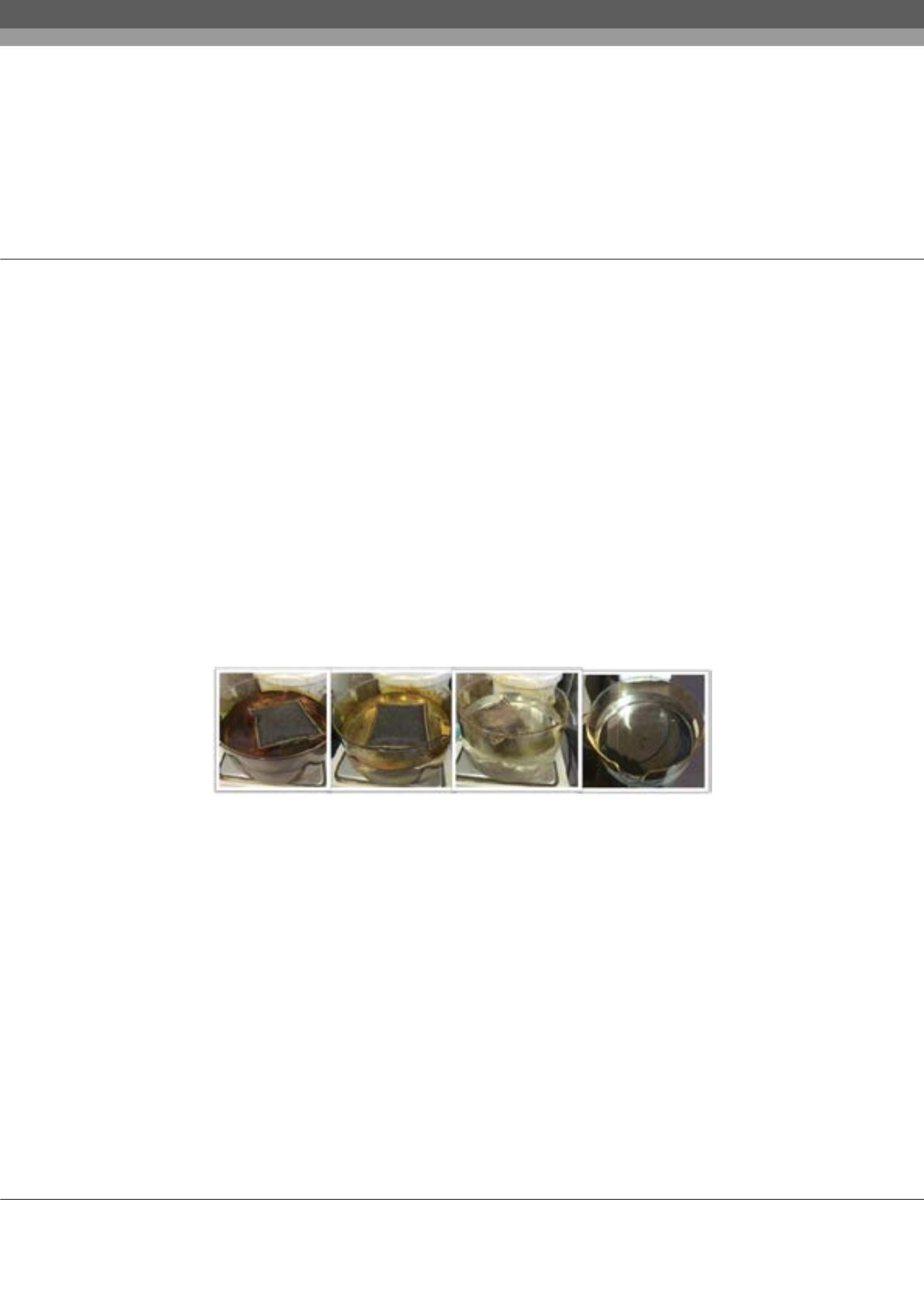

Notes:
Volume 3, Issue 2 (Suppl)
Trends in Green chem
ISSN: 2471-9889
Environmental & Green Chemistry 2017
July 24-26, 2017
Page 53
5
th
International Conference on
6
th
International Conference on
July 24-26, 2017 Rome, Italy
Environmental Chemistry and Engineering
Green Chemistry and Technology
&
Graphene-based material for oil spill removal
Annalisa Pola
and
Alessandra de Folly d’Auris
Eni S.p.A, Italy
O
il spill events required efficient and rapid response by authorities and operating staff. The emergency management is not simple
and usually is affected by a large consumption of materials and high operative costs. The optimization of the adsorbents is a
starting point to reduce these costs. In this study, a graphene-based material (called Grafysorber®, produced by Directa Plus S.p.A)
was used inside adsorbent devices (barriers and pillows) to treat waters containing an oily separated phase. Grafysorber® is a super-
expanded graphite with a production apparent density of about 2.5 g/L. Three different kind of oils were tested: kerosene, diesel fuel
and crude oil, to understand if there is a relationship between viscosity and sorption capacity. In addition, reusability of each device
was evaluated. Little pillows of about 10*10 cm were used for adsorption tests. Results showed that the greater is the viscosity, the
greater is the amount of oil sorbed; 50.8 g/g for kerosene, 76.5 g/g for diesel fuel, 81.78 g/g for crude oil. Grafysorber® pillows can be
reused, after simple squeezing, for about 4-5 times. A progressive decrease of adsorption capacity was detected. Polypropylene, the
standard adsorbent material used worldwide in case of water oil spill clean-up activities, showed a sorption capacity at least six times
lower than Grafysorber®. The effect of the waves was considered, using diesel fuel, in a 1*5 meters tank, and small adsorbent barriers
(7.5 cm diameter and 50 cm length). Water motion caused an increase in the saturation’s speed but also an increase of retained water
both for Grafysorber® and for Polypropylene barriers. A dropping phase of 5 min is necessary for Grafysorber® and polypropylene
devices to favor the water expulsion from the adsorbent device. Anyway, it has been demonstrated that Grafysorber® retains on
average the 50% less of water than polypropylene.
Figure 1:
Example of crude oil adsorption by Grafysorber G+
Biography
Annalisa Pola graduated in Environmental Science (University of Insubria – Como – Italy) and is an Environmental Application Manager at Directa Plus S.p.A.
Directa Plus is one of the largest producers and suppliers of graphene-based products for use in consumer and industrial markets worldwide.
annalisa.pola@directa-plus.comAnnalisa Pola et al., Trends in Green chem, 3:2
DOI: 10.21767/2471-9889-C1-002
















